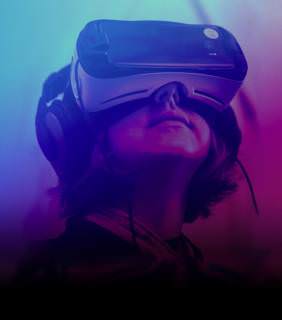Game of Thrones Season 7 may be over, but the show’s hype won’t simmer anytime soon. HBO and its partners have been hard at work creating immersive experiences to keep fans enthralled until Game of Thrones‘ eighth and final season premieres next year.
On Tuesday, HBO and series composer Ramin Djawadi took to Facebook Live to announce a Game of Thrones Live Concert Experience in 2018. Last year, Djawadi took the show across Canada and the United States and performed songs from the first six seasons leading up to Season 7.
Now, with new music in tow, the composer is kicking off a world tour in May that features special sets, projected imagery and a live orchestra with choir.
Music is coming to the U.S. & Europe.
Purchase tickets for the #GoT Live Concert Experience with @Djawadi_Ramin: https://t.co/3jDNCoXkJt pic.twitter.com/x7PUyjJSHY— Game Of Thrones (@GameOfThrones) September 26, 2017
Those longing to return to the show’s gritty realms of Westeros and Essos will be able to do the next best thing on October 28—visit their props and recreated locations in a touring museum exhibit. Game of Thrones: The Touring Exhibit will make its debut at the Musea Marítim in Barcelona, Spain with future locations to be announced at a later date.
The exhibit features a 10,000-square-foot interactive space filled with props and costumes, all displayed within their respective, recreated realms from the show. Of course, the centerpiece is the iconic Throne Room, where visitors can gaze longingly at the foreboding Westeros seat of power.
HBO chose Barcelona as the first stop on its exhibition journey for two reasons—to promote the newly released HBO España streaming service and to celebrate a partnership with Spain, which has hosted many of the show’s filming locations.
Ireland is another filming location for the show and it, too, is celebrating its association with the hit program. Tourism Ireland has created a giant 252-foot-long medieval-style tapestry that covers the story of the show from its beginning to the latest episode of Season 7.
Artists and weavers painstakingly recreated key moments from each episode, which were hand-woven into the finished product. The Game of Thrones tapestry is currently on display at the Ulster Museum in Belfast, Ireland.
An upcoming mobile MMO strategy game called Game of Thrones: Conquest will challenge players to lead their own house, navigate the political landscape of Westeros and make alliances or battle rivals in pursuit of the Iron Throne. The game will feature key characters from the show and their likenesses, including Daenerys, Jon Snow and Tyrion.
One thing Game of Thrones fans love to do is associate themselves with one of the great houses, each of which is constantly battling for supremacy. To emulate Westeros’ modus operandi of “rise, fall, power and reign,” HBO recruited urban streetwear designers to create unique, show-inspired pieces for the fans.
Dubbed “Rep The Realm,” a new piece was introduced each week during Season 7, beginning with tote bags and tee shirts by Carrots.
Additional pieces include a varsity jacket by Billionaire Boys Club (limited to only six), gold sneakers by Koio Collective that pay tribute to Jamie Lannister and his golden hand, skateboard decks by Visual and more.
Of course, the best cure for the “in-between-seasons-blues” is to immerse oneself in the show. While fans wait for Season 7 on Blu-ray and DVD this winter, HBO released a special behind-the-scenes series called The Game Revealed.
The seven-part series takes a deeper look at the making of Season 7 with interviews from cast and crew alongside behind-the-scenes footage. HBO has also been releasing storyboards and set photos across its social channels to show how certain scenes came together.
“Game of Thrones fans are constantly hungry for new ways to engage with the show, and they particularly love any type of video content that provides deeper context and insights directly from the creative team that works so hard to put the show together,” HBO’s director of digital content Tanner Stransky said in a press release. “Season 7 was packed with huge battles, shocking twists, and highly anticipated encounters between fan-favorite characters. By releasing The Game Revealed post-season, we hope to give fans an outlet to dive deeper into the big moments of Season 7 now that it’s reached its dramatic climax, keeping them engaged with the series and giving them a chance to see how all of the pieces were put into place to deliver such a thrilling season-long arc.”
Fans can get a sneak peek at the 45-hour bonus disc included with Game of Thrones: The Complete Seventh Season DVD/Blu-ray with an animated history of the seven kingdoms.


